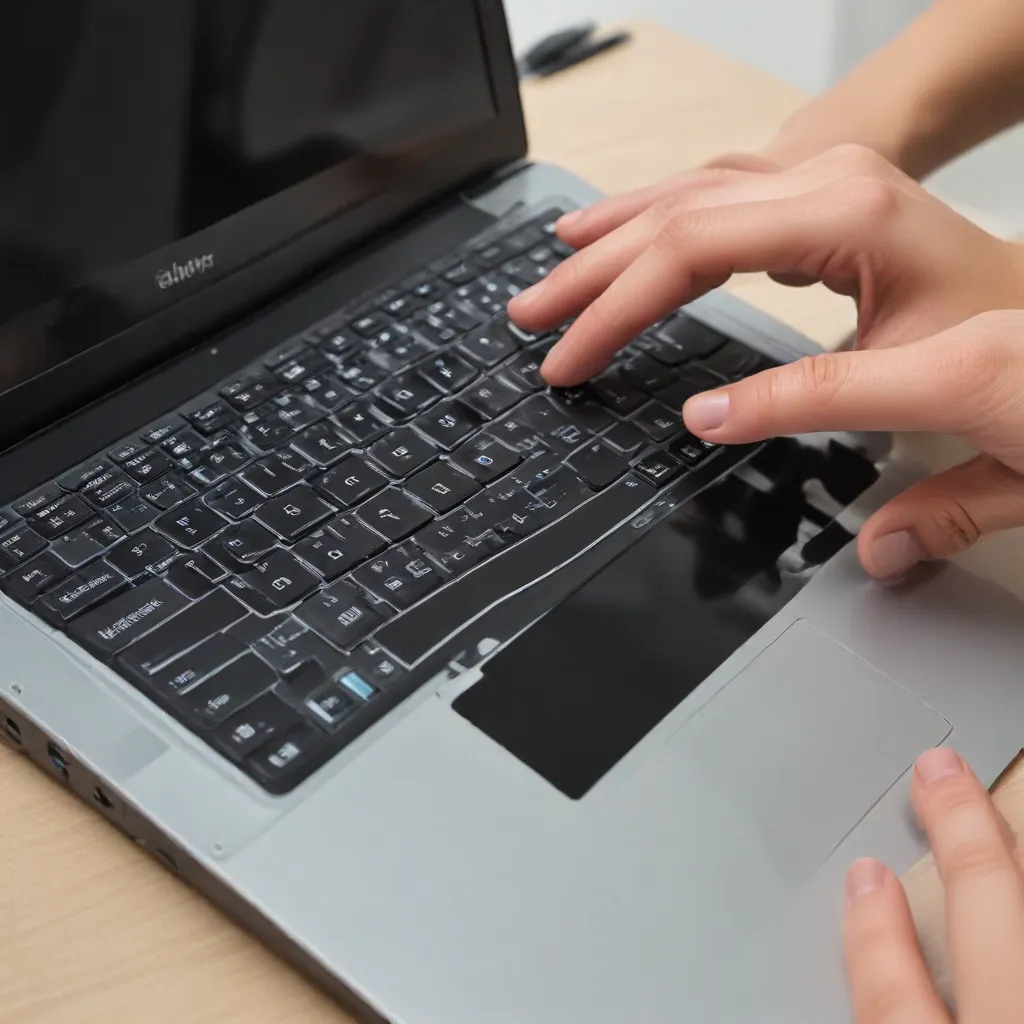
Diagnosing and Troubleshooting Common Touchscreen Issues
As an experienced IT professional, I’ve encountered my fair share of laptop touchscreen and digitizer malfunctions. These can be frustrating problems for users, but with the right troubleshooting steps, many can be resolved effectively. In this comprehensive guide, I’ll share practical tips and in-depth insights to help you diagnose and fix a variety of touchscreen issues, from unresponsive inputs to calibration problems.
Understanding the Touchscreen Components
To properly address touchscreen problems, it’s important to understand the key components involved. At the heart of a touchscreen laptop is the digitizer, which is responsible for converting touch input into digital signals that the computer can interpret. The digitizer is typically integrated into the display panel or mounted behind it. Malfunctions in the digitizer can lead to a wide range of touchscreen issues.
Additionally, the touchscreen driver software plays a crucial role in enabling seamless touch functionality. This driver communicates between the digitizer hardware and the operating system, ensuring accurate touch recognition and gesture support. Driver incompatibilities or corruption can also contribute to touchscreen problems.
Troubleshooting Unresponsive Touchscreens
One of the most common touchscreen issues is a complete lack of response to user input. This can occur after a screen replacement, hardware damage, or software conflicts. Here are the steps to troubleshoot an unresponsive touchscreen:
-
Check the Hardware Connections: Ensure that the touchscreen cable is properly connected to the motherboard or display panel. Gently disconnect and reconnect the cable, making sure it’s securely in place.
-
Test the Touchscreen in UEFI/BIOS: Reboot the laptop and enter the UEFI/BIOS menu (usually by pressing a specific function key during startup). Try interacting with the touchscreen within the UEFI/BIOS environment. If the touchscreen works here, the issue is likely software-related.
-
Reinstall the Touchscreen Driver: If the touchscreen is unresponsive in the operating system, the driver may be corrupted or outdated. Uninstall the existing driver using the Device Manager, then download and install the latest driver from the manufacturer’s website.
-
Perform a Factory Reset: If the above steps don’t resolve the issue, a factory reset may be necessary. This will restore the laptop’s software to its default state, potentially fixing any software-related touchscreen problems.
Addressing Inaccurate Touch Inputs
Another common touchscreen issue is inaccurate touch registration, where the system responds to a different part of the screen than where the user has touched. This can be caused by digitizer misalignment or calibration problems. Here’s how to troubleshoot this:
-
Recalibrate the Touchscreen: Many operating systems provide a built-in touchscreen calibration tool. Locate and launch this tool, then follow the on-screen instructions to properly calibrate the touchscreen.
-
Update the Touchscreen Driver: Outdated or incompatible touchscreen drivers can lead to inaccurate touch input. Check the manufacturer’s website for the latest driver update and install it.
-
Check for Hardware Damage: If the touchscreen continues to register inputs inaccurately, there may be physical damage to the digitizer or display panel. In this case, the laptop may require professional repair or screen replacement.
Dealing with “Phantom” or “Ghost” Touches
Some users encounter the frustrating issue of “phantom” or “ghost” touches, where the system responds to non-existent input. This can be caused by a variety of factors, including hardware problems, driver conflicts, or even environmental interference. Here’s how to troubleshoot this:
-
Restart in Safe Mode: Boot the laptop into Safe Mode, which loads a minimal set of drivers and services. If the phantom touches disappear in Safe Mode, the issue is likely software-related.
-
Uninstall Conflicting Drivers: Use the Device Manager to uninstall any third-party input-related drivers, such as those for a graphics tablet or touchpad. Then, allow the system to automatically reinstall the default drivers.
-
Check for Electromagnetic Interference: Electromagnetic fields from nearby electrical devices can sometimes interfere with touchscreen functionality, causing ghost touches. Try moving the laptop away from potential sources of interference, such as power adapters or wireless chargers.
-
Inspect the Display Panel: If the above steps don’t resolve the issue, the problem may be a hardware fault within the display panel or digitizer. In this case, the laptop may require professional repair or replacement of the affected components.
Addressing Slow Touch Response
Occasionally, users may experience a delayed or sluggish response from the touchscreen, where touch inputs take longer to register or interact with on-screen elements. This can be caused by a variety of factors, including hardware limitations, software conflicts, or system performance issues. Here’s how to troubleshoot slow touch response:
-
Check System Performance: Ensure that the laptop’s hardware is sufficient to handle the demands of the operating system and any running applications. Excessive CPU or memory usage can impact the responsiveness of the touchscreen.
-
Update the Touchscreen Driver: Outdated or incompatible drivers can contribute to slow touch response. Download and install the latest driver from the manufacturer’s website.
-
Disable Unnecessary Background Processes: Close any unnecessary applications or background processes that may be consuming system resources and interfering with touchscreen responsiveness.
-
Perform a Clean Boot: Start the laptop in a clean boot state, which loads only the essential drivers and services. This can help identify any software conflicts that may be causing the slow touch response.
By following these comprehensive troubleshooting steps, you’ll be well on your way to resolving a wide range of touchscreen and digitizer malfunctions on your laptop. Remember, if the issues persist or you encounter any other hardware-related problems, it’s best to consult a professional IT technician for further assistance.
For more tech tips and IT solutions, be sure to visit IT Fix, the go-to resource for all your computer repair and technology needs.












